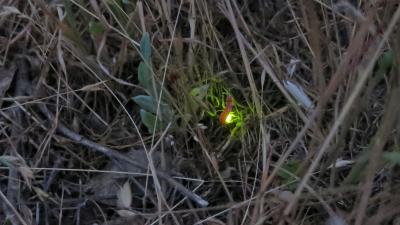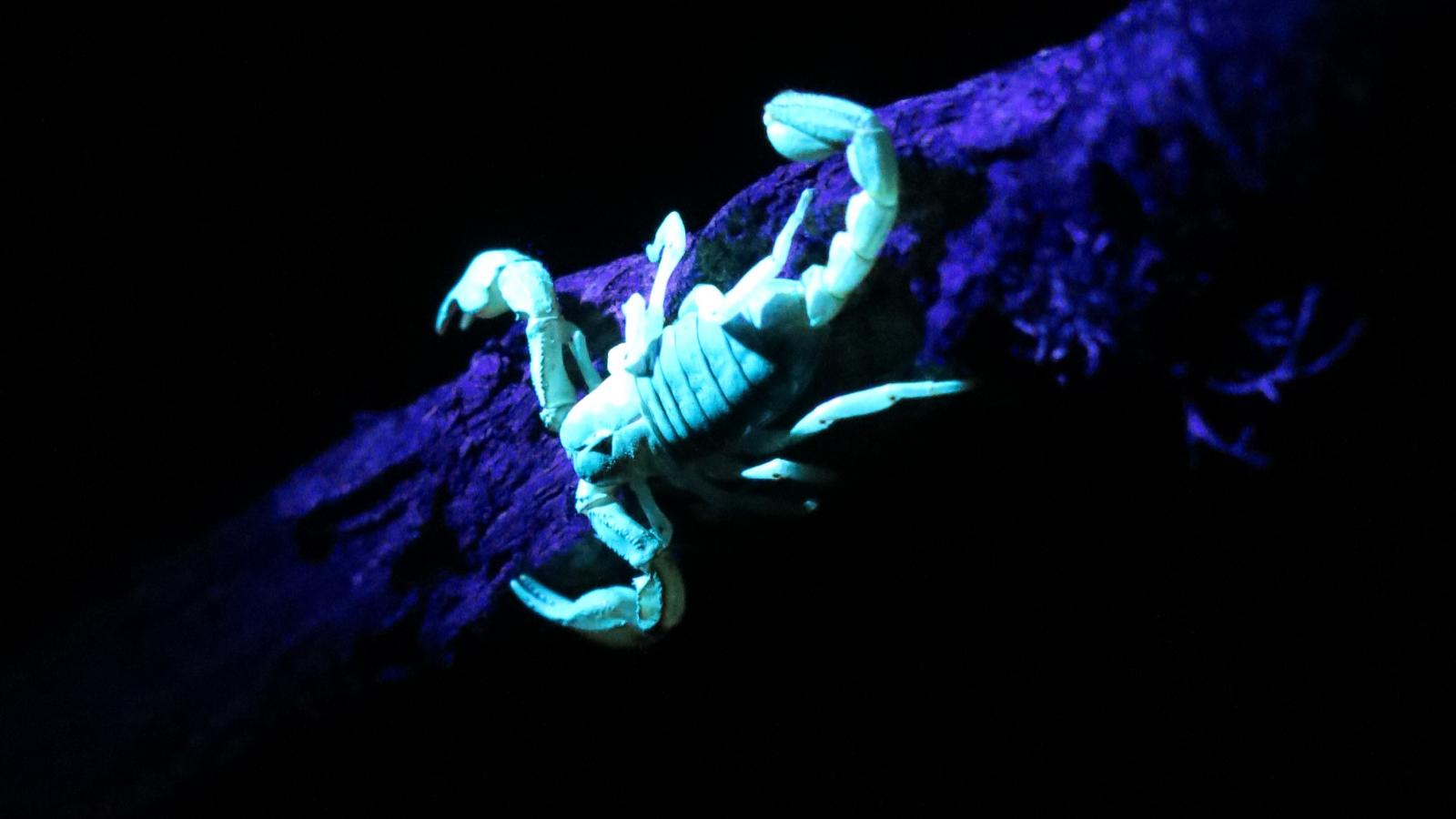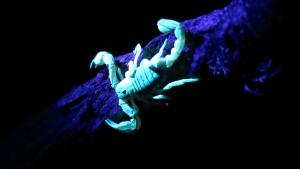Have you ever taken a nature walk in the dark?
There are different things to find after the sun goes down and nocturnal creatures wake up. Some you can find with just your dark-adapted eyes and some with different lights. Tune in your ears too; away from daytime noise, you can discover wildlife that you didn’t know were there. There are plants and animals that you can find in your local open space preserves that are bioluminescent, fluorescent or phosphorescent! Because these types of luminescence are pretty weak, they are most apparent at night when the sunlight isn't around to compete with them. Keep reading to learn more about the glow-in-the-dark organisms that light up Midpen’s nights!
Fluorescence: Glow-in-the-dark, with help
When light hits something, one of three things can happen:
1. It bounces off. Technically, this is called light scattering. It causes, for example, blue skies and reflections.
2. It is absorbed, and then the light's energy is transformed to heat. That's why dark things get hot in the sun. Also, together with the light scattering mentioned above, it's generally responsible for the colors of things: Leaves appear green when you shine white light (a mixture of all colors) on them because they scatter the green and absorb the other colors.
3. It is absorbed and then, after a delay, is emitted as a different color. This is fluorescence.
In fluorescence, some of the light's energy is transformed to heat between when it is absorbed and when it is emitted, so the energy of the emitted light is less than that of the absorbed light. Maybe the most striking kind of fluorescence in nature is that which occurs with ultraviolet light. The fluorescing object seems to glow all on its own, because you can't see the ultraviolet light ("black light") that's shining on it, but you can see the fluorescence that appears as a visible color.
Energy is related to color. Ultraviolet light is very energetic (sunburn!), and energy decreases as you go through the spectrum: Violet to indigo to blue to green to yellow to orange to red. That's the rainbow mnemonic ROYGBIV in reverse. Since the emitted light has less energy than the absorbed light, the two have different colors. The emitted light will always be closer to the red end of the spectrum than the absorbed light is.
Whether something scatters light, transforms it to heat, or fluoresces depends on the molecular structure and environment of the substance, and on the color of the light. The balance among scattering, heating and fluorescence is often not easy to predict, but there's rule of thumb: In most situations in nature, fluorescence is much weaker than the other two. This means that few things fluoresce (or phosphoresce) strongly enough to be seen. Even then, it's hard to see the fluorescence during the daytime, when the fluorescence gets swamped out by the brightness of scattered sunlight. Night is the best time to see fluorescence.
There are two fairly common animals here that glow when certain wavelengths of light are shined on them. Scorpions do, as do certain millipedes. These tend to be out at different times of the year.
Certain fungi and lichens also fluoresce, as do some minerals. Many plants exhibit red fluorescence in their green leaves, which contain chlorophyll.
Phosphorescence: Like fluorescence, but longer lasting
Fluorescence is really brief: The emission happens less than a millionth of a second after exciting light is absorbed. So, if you turn off the exciting light, the fluorescence stops (almost) immediately.
Phosphorescence is like fluorescence that is stretched out in time. If you shine exciting light on a phosphorescent material and then turn it off, light emission will continue for (usually) seconds to minutes. Phosphorescence is less common than fluorescence.
You may have seen phosphorescent items like stars that you stick on your ceiling. During the day, light charges the stars and, when it’s dark, they glow.
We have found one natural subject in our open spaces that both fluoresces and shows brief phosphorescence. The common millipede Xystocheir dissecta appears beige or tan in daylight. Under ultraviolet light it fluoresces teal. If we continue shining the light on the millipede for a few seconds and then turn it off, we can see a very brief whitish phosphorescent afterglow.

Bioluminescence: The real “glow-in-the-dark”
In our preserves, we have at least two organisms that produce light on their own, without additional light. This results from a chemical reaction.
The gills of the western jack o’lantern fungus (Omphalotus olivascens) produce a greenish glow.
Another is a beetle in the firefly family (Lampyridae). Yes, we have them, but they don’t light up the sky like they do elsewhere. The females of the pink glowworm (Microphotus angustus) look like larvae with no wings, and, at the right time of year, their light organs emit a green glow. The males have wings and use their large eyes to find the females. Males only glow dimly, under duress. (Some other beetles are also called fireflies or glowworms, and it gets a bit confusing. Not all growth stages of all species glow.)

Walking in the dark – How docents find glow-in-the-dark organisms
When we bring people out for a night hike, we try to use as many of our senses as possible when it comes time to navigate in the dark.
Starting out, we mostly use red light from our flashlights. This helps preserve our night vision, plus critters generally aren’t as bothered as they would be with white light. With red, eyeshine can be seen from some vertebrates and from wolf spiders. We use UV to find things that fluoresce, shining the light to scan the trail and along the sides. This works best without much moonlight. If there happens to be a vertebrate, we avoid shining the UV light at them since, as with us, direct UV light is not good for eyes. With other critters, we only shine the UV as long as necessary. They often let us know if it bothers them, by their behavior.
Different seasons show us different things. In certain areas, we can find bright green pinpoints of light from glowworms in the dark without the use of flashlights.
Smells and sounds may help to find things—in bay laurel forest when nuts are on the ground and being stepped on, the insides will show up with UV. Certain sound-producing insects may also become visible.
Touching/rubbing certain things such as a flower with pollen can cause your fingertips to glow under UV.
You can try this in your own back yard—you may be surprised!


